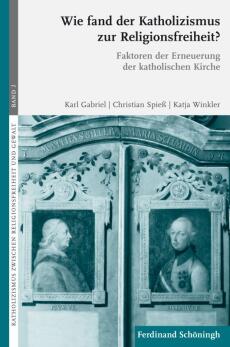Modern Catholicism and Religious Freedom

Fifty years ago, in its declaration on religious freedom at the Second Vatican Council, the Catholic Church programmatically dispensed with political coercion as a means of enforcing its claim to truth. This “declaration to dispense with coercion” in Dignitatis Humanae is an act of self-imposed restriction with regard to religious claims to truth that is exceptional in the history of religions. It is still extremely difficult to explain even today how such a traditional institution as the Catholic Church could have altered its position so fundamentally. The characteristics, circumstances and dynamics of the path of Catholicism to recognizing religious freedom in all its diversity were the object of research of the project “Dispensing with coercion among religious traditions: modern Catholicism between distinction and integration”, which was carried out in the Cluster of Excellence “Religion and Politics” at the University of Münster. This volume in the series “Catholicism between religious freedom and coercion” (Volume 2) draws on the findings of the previous volumes in the series, which were part of the research project. This volume appears exactly 50 years after the final vote and promulgation of the Declaration on Religious Freedom on 7 December 1965, one day before the end of the Second Vatican Council. It takes stock of the different opinions voiced at this major event in the history of the Church in the 20th century. It also reconstructs the developments before and during the Council that made this decision possible. The volume places the decision in a matrix of contextual factors that together opened a window of opportunity for this turning-point in the relationship of the Church to the liberal state. The aim of the volume is to contribute to a broader and deeper understanding of the learning process undergone by the Catholic Church – a process unexpected in many respects. It is only when learning processes are understood and internalized that they can be deemed irreversible. Whether the analyses tell us something about further steps that need to be taken to change the Catholic Church, or about processes of change in other religious traditions, is a question that only time can answer.

